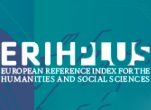Young researchers
2/2025
Similarities between Stock Market Reactions during the 2007 Financial Crisis and the 2020-2021 Coronavirus Pandemic. Correlation and Cointegration Analyses
In light of two recent global economic shocks,
the global financial crisis of 2007/08 and the COVID-19 pandemic, this paper
analyzes the relationships between global shocks and the national stock
markets, looking to trends in volatility for the leading stock indices in six
CEE countries, namely Austria, Bulgaria, Czech Republic, Hungary, Poland, and
Romania, and indices from Germany (DAX) and the United States (S&P 500). The selected indices include the largest
domestic companies in each country and make up most of the domestic market
capitalization. For the analysis we used Garman-Klass (GK) volatility
estimator, as the volatility was considered the most important proxy for market
uncertainty. Then we used a simple correlation matrix to show initial tendencies.
Also, the Johansen's test was used to determine if the indices are cointegrated
and if this relationship has changed significantly in the non-crisis periods.
We analyze Granger causality and the network approach as proposed by Diebold
and Yilmaz (2015). The GK volatility results were individualized in three
periods: 2007-2011 as a proxy for the global financial crisis and European
sovereign debt; 2012-2019 representing a period of economic recovery and
ultimately 2020-2021 representing the data points for the COVID-19 global
pandemic. We find that particularly during periods of global distress,
correlations between patterns of volatility for the stock market indices from
these countries increase, and they exhibit stronger patterns of cointegration.
These findings highlight the increasing connectivity in global financial
markets and added challenges in crafting portfolio diversification strategies
based on geography of stock holdings.
COVID-19, stock market, financial crisis, volatility
G01, G40
G01, G40














